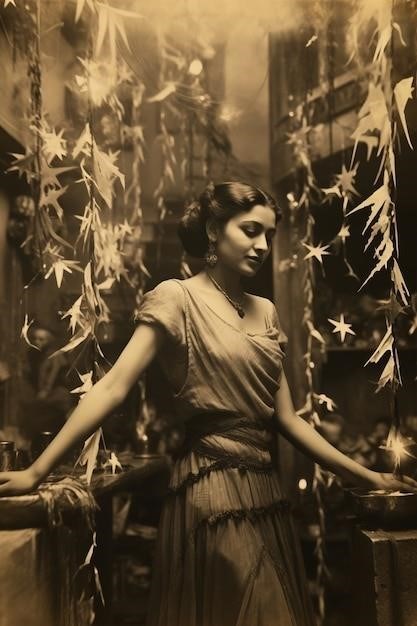Laura Mulvey’s “Visual Pleasure and Narrative Cinema”
Laura Mulvey’s seminal essay, “Visual Pleasure and Narrative Cinema,” published in 1975, explores the ways in which classical Hollywood cinema reinforces the objectification of women through its visual and narrative structures. Mulvey’s work, drawing on Freudian psychoanalysis, has had a profound impact on feminist film theory and film studies, sparking ongoing debates about representation and the power dynamics at play in cinema.
Introduction
Laura Mulvey’s “Visual Pleasure and Narrative Cinema” is a groundbreaking essay that revolutionized the way we understand the relationship between cinema, gender, and power. Published in 1975, it challenged the traditional understanding of film spectatorship, arguing that the dominant cinematic conventions of the time reinforced patriarchal structures and the objectification of women. Mulvey’s work, drawing on Freudian psychoanalysis, introduced key concepts like scopophilia and the male gaze, which have become central to feminist film theory and critical analysis of cinema.
Key Concepts
Mulvey’s essay introduces two key concepts that are fundamental to understanding her argument⁚ scopophilia and the male gaze. Scopophilia refers to the pleasure derived from looking, a voyeuristic desire to control and objectify the other. The male gaze, on the other hand, refers to the way in which the camera and the narrative structure of film are positioned to reflect a male perspective, often presenting women as objects of desire and spectacle. These concepts, intertwined with the psychoanalytic framework of Freud, form the foundation of Mulvey’s analysis of classical Hollywood cinema.
Scopophilia
Mulvey’s concept of scopophilia draws on Freud’s psychoanalytic theories, particularly the concept of the libido, a driving force of pleasure and desire. Scopophilia, in this context, refers to the pleasure derived from looking, from actively subjecting another to a controlling and curious gaze. This pleasure, according to Mulvey, is rooted in a desire to possess and control the object of the gaze, turning it into a passive spectacle to be consumed; Scopophilia, therefore, plays a central role in how classical Hollywood cinema constructs the female figure, making them objects of visual pleasure for the male viewer.
The Male Gaze
The “male gaze” is a central concept in Mulvey’s analysis, representing the dominant perspective through which classical Hollywood cinema is structured. It refers to the way the camera, and thus the viewer, is positioned as a male subject, actively looking at and controlling the female object. This gaze is not neutral; it’s inherently voyeuristic and objectifying, reducing women to their physical attributes and sexual availability. The male gaze operates through both the camera’s point of view and the identification of the male protagonist, reinforcing the power dynamics between men and women in the cinematic experience.
Analysis of Classical Hollywood Cinema
Mulvey’s essay dissects the visual and narrative conventions of classical Hollywood cinema, arguing that they are designed to reinforce the male gaze and objectify women. She examines how the camera’s movement, framing, and editing create a voyeuristic experience for the viewer, often focusing on female characters’ bodies and their relationship to male characters. This analysis exposes the ways in which the cinematic language itself contributes to the perpetuation of gender stereotypes and the power imbalance between men and women in the film industry.

Objectification of Women
Mulvey argues that classical Hollywood cinema often presents women as objects of the male gaze, reducing them to their physical attributes and sexual desirability. This objectification is evident in the way female characters are often framed, positioned, and presented within the narrative. They are frequently shown in revealing clothing, captured in poses that emphasize their bodies, and their actions are often motivated by their relationships with men or their desire to be admired by them. This visual language, according to Mulvey, reinforces the patriarchal power structures that define women’s roles in society.
Fetishization
Mulvey also explores the concept of fetishization in relation to the representation of women in cinema. She suggests that the male gaze often transforms women into objects of desire, detached from their individuality and agency. This fetishization, she argues, serves to displace the anxiety associated with the female body and its potential for castration. By focusing on specific physical features, the male gaze transforms the woman into a “thing” rather than a person, allowing the viewer to avoid confronting the complexities of female subjectivity and the threat it poses to the patriarchal order.
The Impact of “Visual Pleasure and Narrative Cinema”
Mulvey’s essay has had a lasting impact on film theory and criticism, significantly influencing the development of feminist film theory. Her analysis of the male gaze and its role in objectifying women has become a cornerstone of feminist film studies, prompting scholars to critically examine the representation of women in cinema and challenge traditional notions of cinematic pleasure. Mulvey’s work has also contributed to a broader understanding of the relationship between cinema and gender, highlighting the ways in which film reflects and reinforces social power structures.
Feminist Film Theory
Mulvey’s essay is widely considered a foundational text in feminist film theory. It provided a powerful framework for analyzing the ways in which cinema constructs and perpetuates patriarchal structures. By focusing on the male gaze, Mulvey challenged the traditional assumptions about cinematic pleasure and exposed how the cinematic experience often reinforces the objectification and disempowerment of women. Her work inspired generations of feminist film scholars to examine the representation of gender in film and to advocate for more equitable and inclusive cinematic practices.
Film Studies
Beyond feminist film theory, “Visual Pleasure and Narrative Cinema” has had a significant impact on film studies as a whole. Mulvey’s essay helped to shift the focus of film analysis away from purely formalistic concerns towards a more critical examination of the ideological underpinnings of cinema. Her use of psychoanalysis as a tool for analyzing film opened up new avenues of inquiry and sparked a renewed interest in the relationship between film and the unconscious. Mulvey’s work has been cited in countless film studies texts and continues to be a vital point of reference for understanding the complex interplay of power, desire, and representation in cinema.
Criticisms and Debates
While Mulvey’s essay has been widely influential, it has also been the subject of considerable criticism and debate. Some critics argue that her focus on the male gaze and the objectification of women is too narrow and overlooks the complexities of gender representation in film. Others have questioned the universality of the psychoanalytic framework she employs, arguing that it fails to account for cultural and historical variations in cinematic practices. Despite these criticisms, Mulvey’s “Visual Pleasure and Narrative Cinema” remains a crucial text for understanding the historical and ideological context of film, sparking ongoing discussions about the role of gender, power, and representation in the art of cinema;
Representation of Women
One of the most significant criticisms leveled at Mulvey’s work concerns its representation of women. Critics argue that her focus on the male gaze and the objectification of women reduces women to passive objects of desire, neglecting the agency and complexity of female characters in film. They contend that Mulvey’s analysis overlooks the diversity of female experiences and the possibility of female subjectivity in cinema. This critique highlights the need for a more nuanced understanding of gender representation, recognizing the agency of female characters and the potential for diverse and empowering portrayals within the cinematic landscape.
Psychoanalytic Framework
Mulvey’s reliance on a psychoanalytic framework has also been subject to debate. Critics argue that her application of Freudian theory, particularly the concept of scopophilia, oversimplifies the complex relationship between viewers and the cinematic experience. They contend that psychoanalytic theory, with its emphasis on unconscious desires and motivations, may not fully capture the diverse ways in which individuals engage with film. Some scholars suggest that other theoretical perspectives, such as feminist film theory or social constructionism, might provide a more comprehensive understanding of the interplay between gender, power, and cinematic representation.
Legacy and Influence
Mulvey’s “Visual Pleasure and Narrative Cinema” has had a lasting impact on film studies and beyond. Her work has been widely cited and analyzed, prompting further research into the relationship between gender, visual representation, and cinematic pleasure. Her ideas have shaped feminist film theory and contributed to a broader understanding of the ways in which power structures are embedded in cinematic narratives. While some of her arguments have been challenged and debated, Mulvey’s essay remains a crucial text for understanding the complexities of representation and the male gaze in film.
Contemporary Film Analysis
Mulvey’s work continues to be relevant in contemporary film analysis. While the focus has shifted from purely critiquing the male gaze to exploring its nuances and complexities, her concepts remain essential tools for understanding cinematic representation. Film scholars now analyze how films both perpetuate and challenge traditional gender roles, exploring the ways in which the male gaze is negotiated, subverted, or even embraced by contemporary filmmakers. Additionally, the impact of digital media and new technologies on visual pleasure and representation is a topic of ongoing debate, influenced by Mulvey’s groundbreaking work.
Gender Studies
Mulvey’s essay has been a foundational text in gender studies, sparking critical discussions about the construction of gender in visual media. Her analysis of the male gaze has served as a springboard for examining power dynamics and representations of masculinity and femininity across a variety of media. Gender studies scholars continue to engage with Mulvey’s work, applying her concepts to analyze contemporary media, including television, advertising, and social media. The impact of Mulvey’s work extends beyond film studies, influencing critical perspectives on gender and representation across diverse fields.
Laura Mulvey’s “Visual Pleasure and Narrative Cinema” remains a landmark essay in film theory, offering a powerful critique of the ways in which classical Hollywood cinema constructs and reinforces patriarchal power structures. Her analysis of the male gaze and the objectification of women has had a lasting impact on feminist film theory, gender studies, and the broader field of film studies. While Mulvey’s work has been subject to criticism, it continues to be a vital tool for understanding the complex interplay of gender, power, and representation in cinema and beyond.
